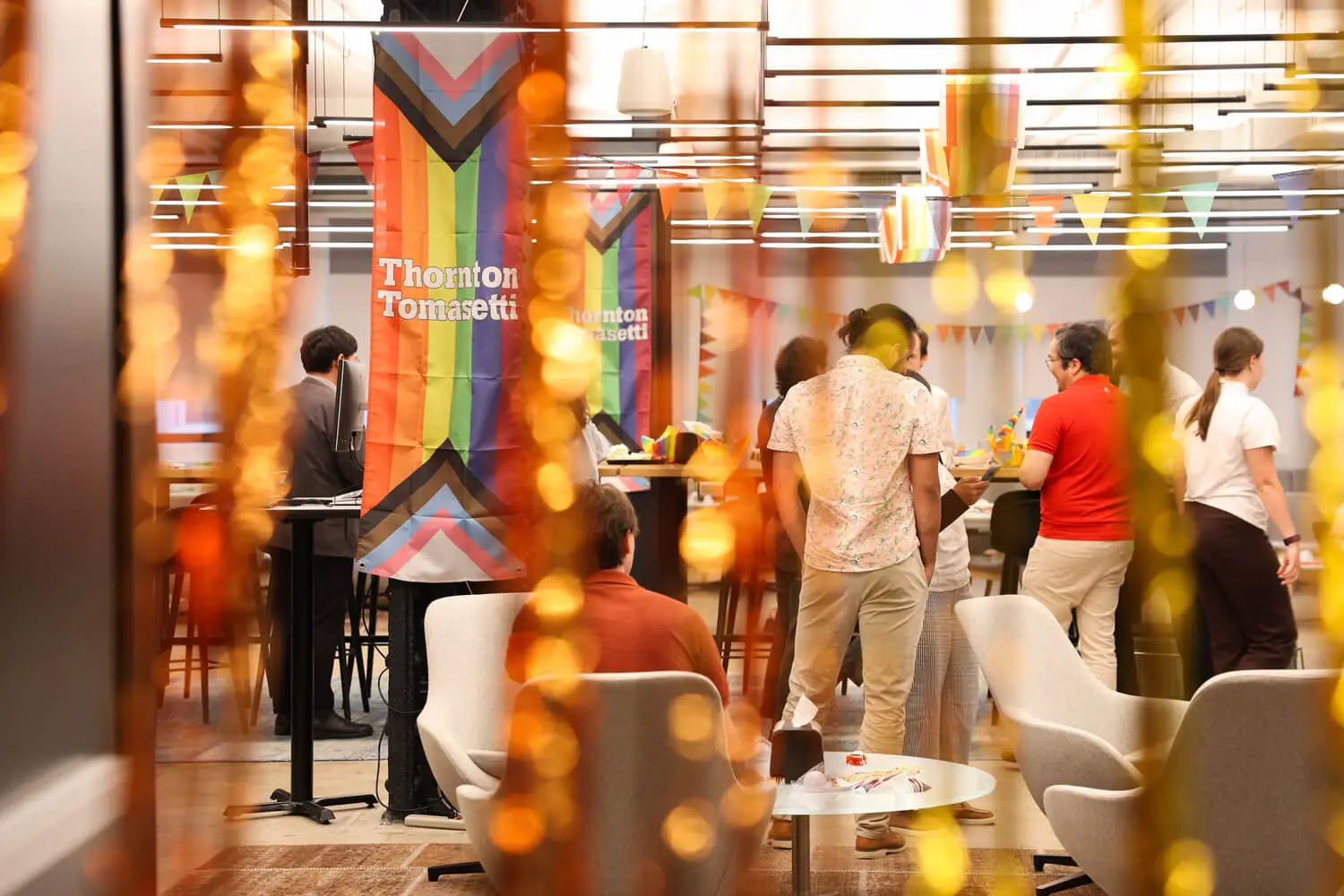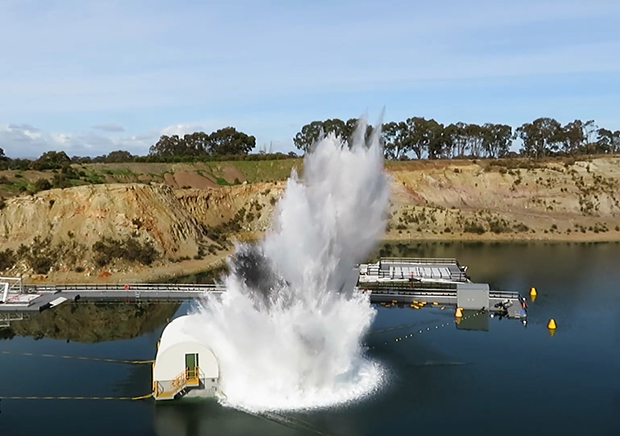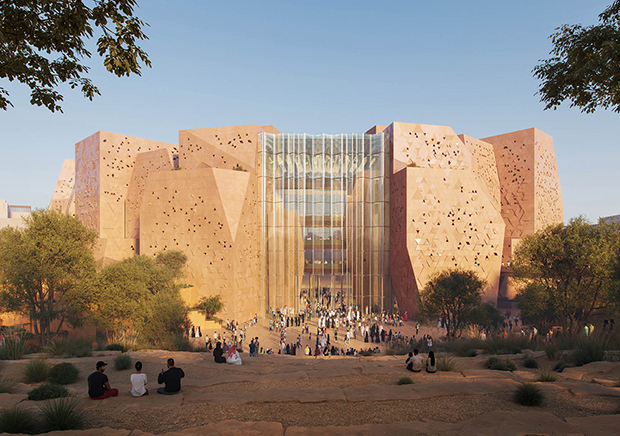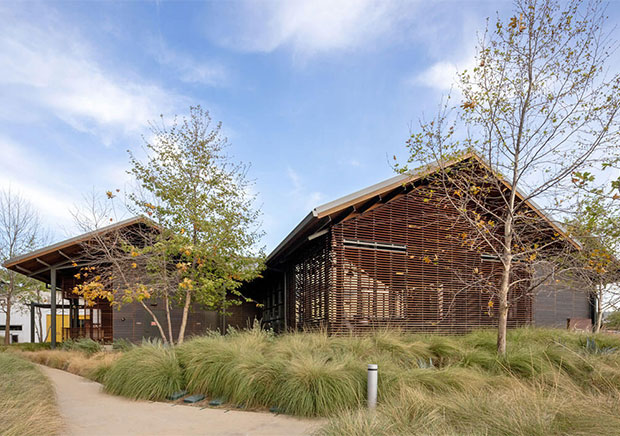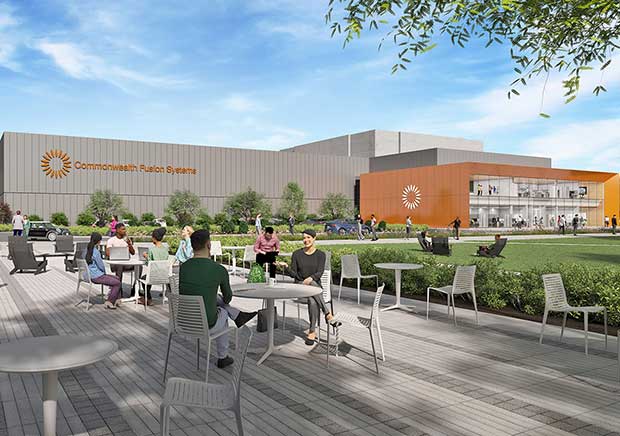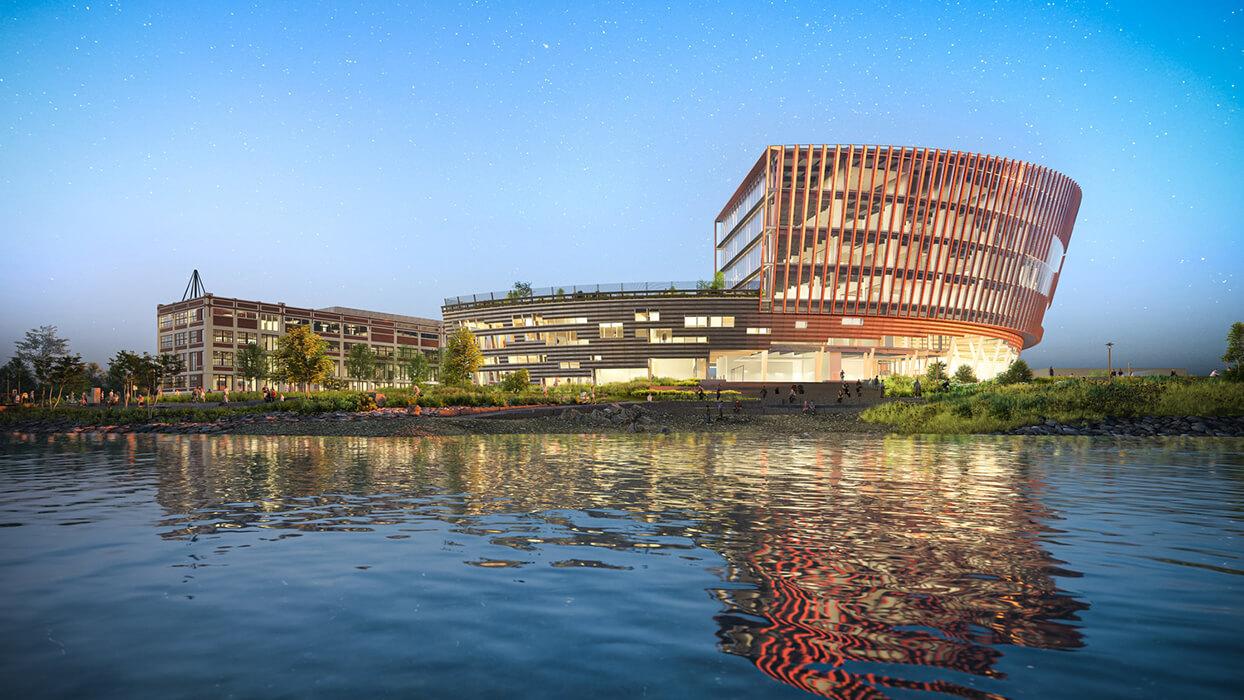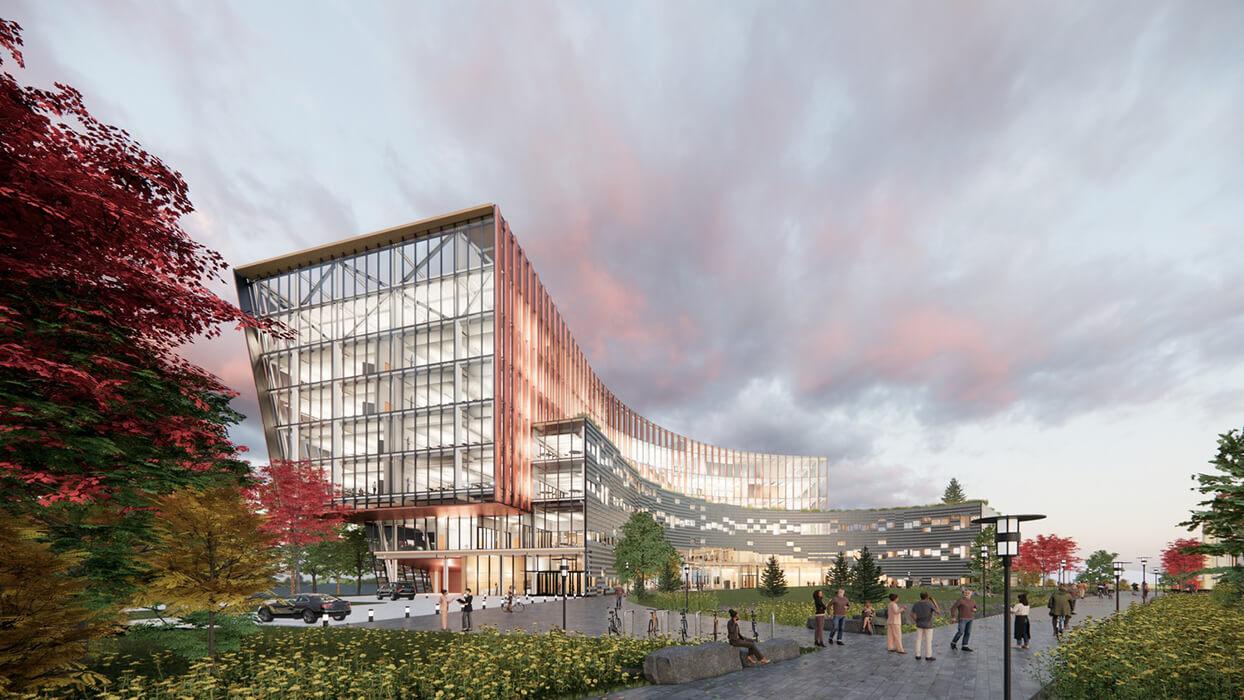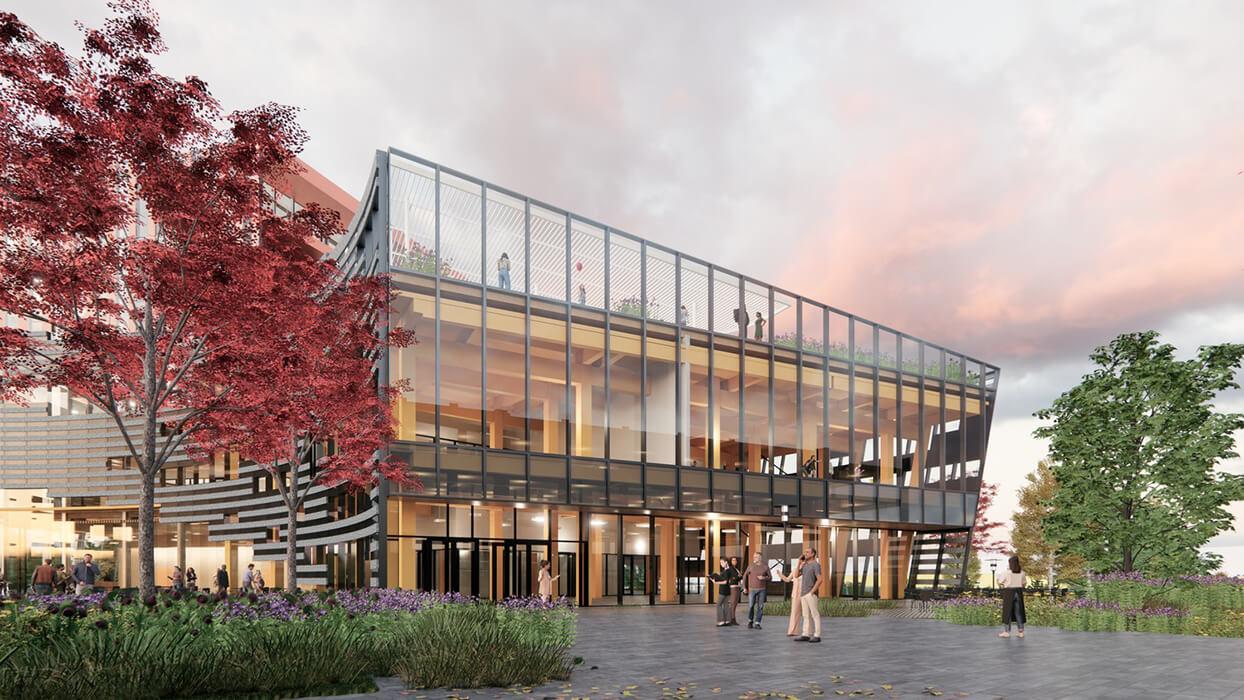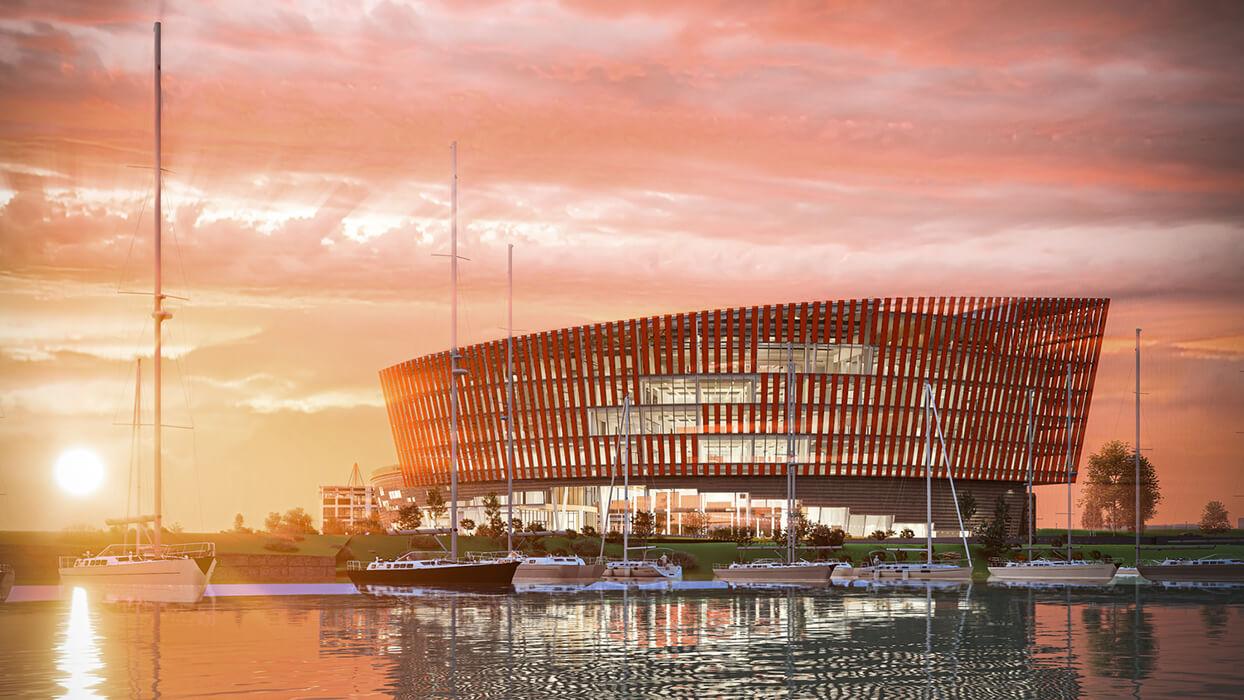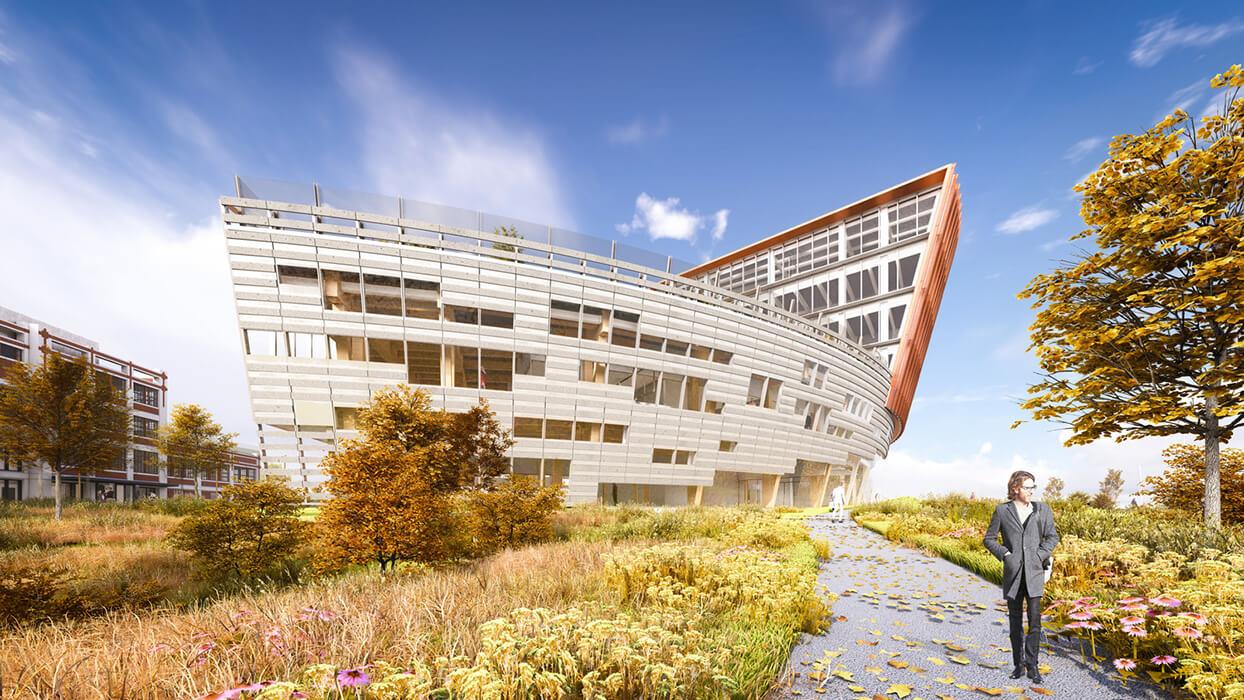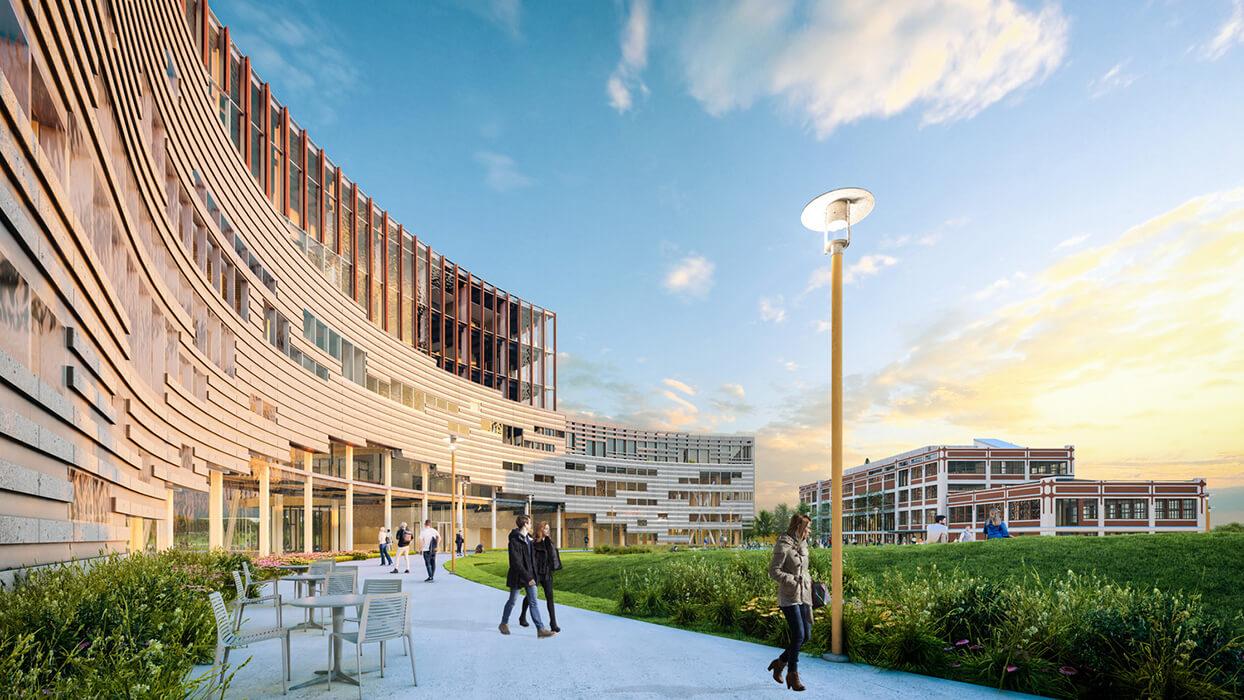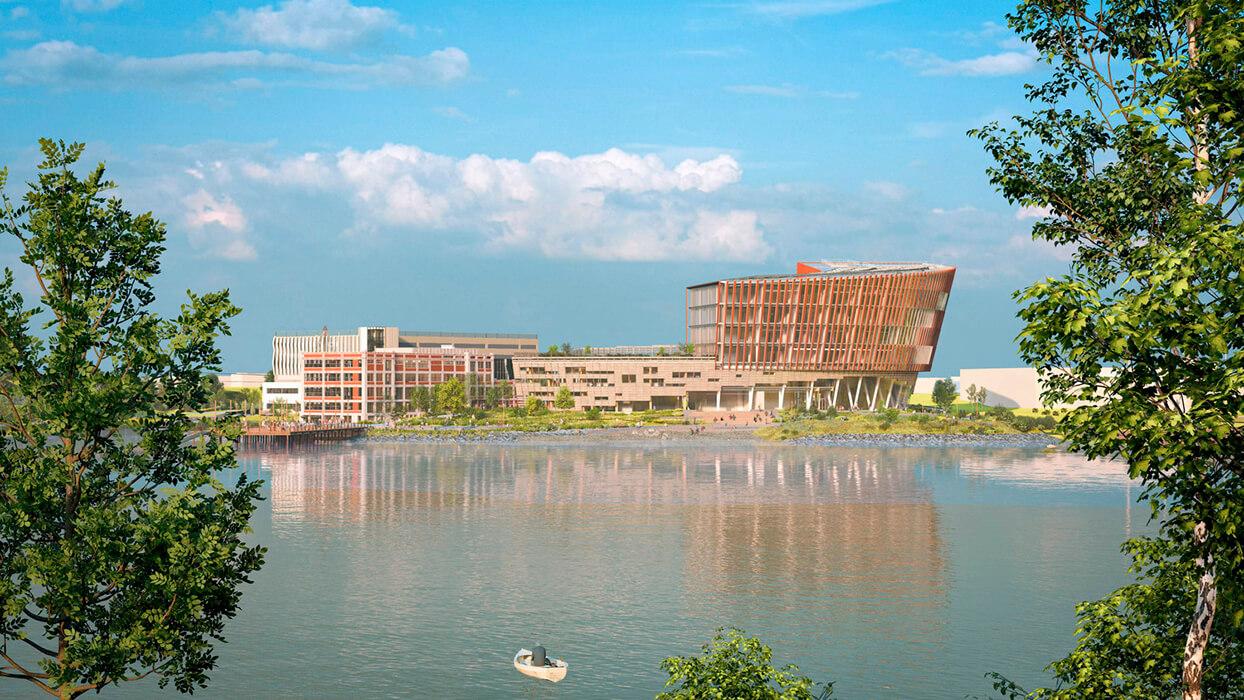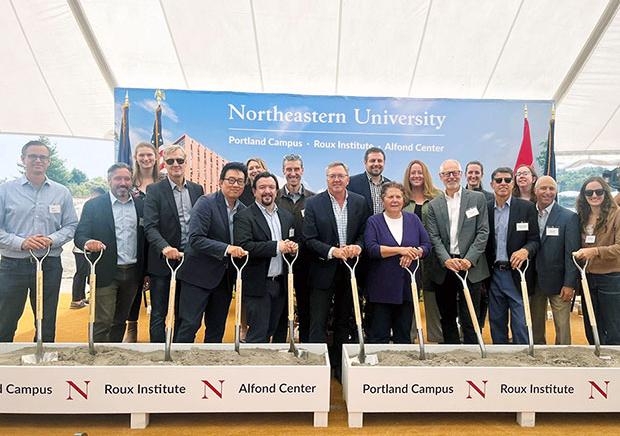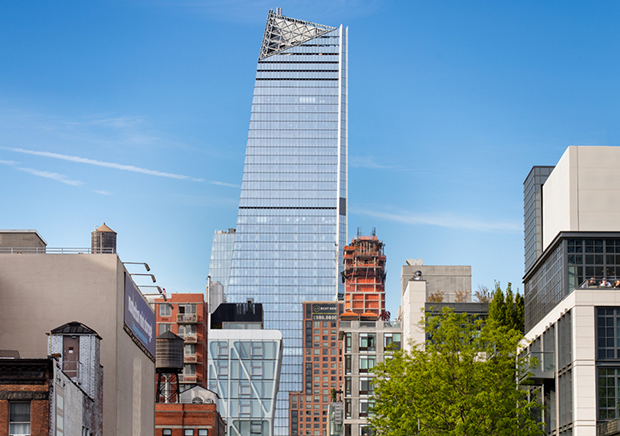
Roux Institute at Northeastern University
A multifaceted approach to sustainability and resilience is helping transform a former B&M Baked Bean factory into a hub for innovation.
Engineering Innovation in Higher Education Facilities
In 1913, the Burnham & Morrill Company constructed a reinforced-concrete building on the shores of Casco Bay in Portland, Maine, to house a new process for preserving and canning fish. The facility eventually began canning baked beans as well, and became a major supplier for U.S. troops during World War I.
Now the Roux Institute at Northeastern University is bringing another wave of innovation to Maine, working with architects CambridgeSeven to transform the former B&M Baked Bean factory and its 13-acre site into a leading institution focusing on artificial intelligence, digital engineering, data science, machine learning and life sciences.
The new academic building is designed as a dramatic curvilinear structure inspired by its location in Maine and drawing on the historic materials of its industrial past – copper, wood, glass and granite. The façade of the lower group of floors, inspired by key material characteristics of Maine’s iconic Bailey Island Bridge, is a unique wall system composed of locally sourced granite. The upper, sail-like segment is a sophisticated curtain wall articulated by copper-colored fins that appear to alter their dimensions in response to the movement of the sun. Our experts led the development of a sustainability charter outlining goals for energy, embodied carbon, materials and water use, occupant experience, transportation equity, and resilience for the 245,000-square-foot building as well as the entire campus.
Sustainability & Low-Carbon Building Strategies in Campus Development
We performed energy modeling with the goal of eliminating fossil fuel use and achieving a 25% carbon savings. To reduce environmental impact, our structural team used mass timber design and high-cement-replacement concrete and prioritized local materials to minimize transport-related emissions. The all-electric facility will rely on geothermal wells for heating and cooling, an advanced ambient temperature loop and seawater cooling. It’s designed to be solar-power ready and is expected to exceed ASHRAE 90.1 2019 standards by 30%.
The building is designed to last a minimum of 100 years, with adaptations to safeguard it from future climate challenges. Our climate-risk and resilience assessment considered the potential impacts of current and future hazards, including coastal and tidal flooding, seismic activity, high winds, severe winter weather and extreme precipitation and heat. Based on our detailed evaluation of sea-level rise through 2100, we raised the site by 10 feet, well above the potential effects of future floods.
Collaborating to Create a Hub for Research and Innovation
This unique project is the epitome of a cooperative effort: The design integrates our structural engineering, sustainability, resilience, concrete core design, vibration modeling and technological support services with input from our Portland, New York and Mumbai offices, as well as our CORE studio R&D team. This integrated approach reduces the risk of design conflicts while facilitating seamless collaboration, faster problem-solving and better coordination across disciplines.
Thornton Tomasetti is also the engineer of record for the design of an above-grade 608-car garage on the site, with CambridgeSeven, as well as restoration and repurposing (with Bruner/Cott Architects) of the iconic 1913 cannery building into an innovation incubator hub. Future development may include student housing and a hotel for visiting guests.
Featured Experts



